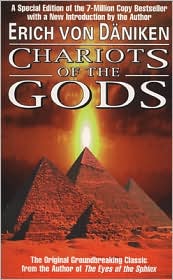Invisible Sex: Uncovering the True Role of Women in Prehistory
Shaped by cartoons and museum dioramas, our vision of Paleolithic times tends to feature fur-clad male hunters fearlessly attacking mammoths while timid women hover fearfully behind a boulder. In fact, recent research has shown that this vision bears little relation to reality.\ The field of archaeology has changed dramatically in the past two decades, as women have challenged their male colleagues' exclusive focus on hard artifacts such as spear points rather than tougher to find evidence of...
Search in google:
Shaped by cartoons and museum dioramas, our vision of Paleolithic times tends to feature fur-clad male hunters fearlessly attacking mammoths while timid women hover fearfully behind a boulder. In fact, recent research has shown that this vision bears little relation to reality. The field of archaeology has changed dramatically in the past two decades, as women have challenged their male colleagues' exclusive focus on hard artifacts such as spear points rather than tougher to find evidence of women's work. J. M. Adovasio and Olga Soffer are two of the world's leading experts on perishable artifacts such as basketry, cordage, and weaving. In The Invisible Sex, the authors present an exciting new look at prehistory, arguing that women invented all kinds of critical materials, including the clothing necessary for life in colder climates, the ropes used to make rafts that enabled long-distance travel by water, and nets used for communal hunting. Even more important, women played a central role in the development of language and social life—in short, in our becoming human. In this eye-opening book, a new story about women in prehistory emerges with provocative implications for our assumptions about gender today. Publishers Weekly This jauntily written, highly convincing analysis by influential anthropologists Adovasio and Soffer and former editor of Natural History and Smithsonian Page argues that women of prehistory were pivotal in a wide range of culture-building endeavors, including the invention of language, the origins of agriculture and the conceptualization of boat building. Although based on the most current scientific evidence, these theories are presented as accessibly as possible, with frequent humorous asides and a wide range of popular cultural touchstones, from Charles Darwin to The Clan of the Cave Bear. The authors offer concepts that radically challenge our preconceptions of human behavior and history. They argue, for instance, that brain development and an increase in longevity that produced extended families, especially grandmothers, brought about a "creative revolution" in the Late Paleolithic period (about 30,000 years ago). The authors also include a fascinating discussion of the possible role of goddess worship in prehistoric society and its relationship to contemporary New Age feminism. Highly readable, well argued, and always fascinating, this critique of traditional anthropology is an important addition to both scientific and feminist literature. (Feb.) Copyright 2006 Reed Business Information.
The Invisible Sex\ Uncovering the True Roles of Women in Prehistory \ \ By J. M. Adovasio \ HarperCollins Publishers, Inc.\ Copyright © 2007 J. M. Adovasio\ All right reserved.\ ISBN: 9780061170911 \ \ \ Chapter One\ The Stories We Have Been Told\ \ In which the authors present tales of male derring-do and explicate their failures in accounts of the deep past, along with a bit of the history of science and the reasons why women have not been found in those old tales.\ \ Since the beginning of archaeology, stories like the following three have been told, illustrated, and taken as the true way in which our ancestors lived and worshipped and fed themselves. They are in much the same vein as most museum dioramas of ancient times and are matched by most magazine and book illustrations as well. Warning: these tales can be dangerous to your understanding of the human past.\ The place: A hill overlooking the Vezere Valley in southwestern France, not far from a cave called the Grotte de Rouffignac.\ The time: 14,000 years ago.\ A group of men makes its way single file along a steep and narrow path that winds up a limestone hill. It is dusk, and the day has been stormy and dark. Impatient gray clouds have commanded the sky, and from time to time they have sent spring rains down, turning the path to mud and making footing difficult. The weather is yet to feel the true onset of spring--that day when the sun begins to warm the earth and the winds turn kind.\ The men climb silently in the gathering dusk. Some of them are slender, in their teens. Others are filled out, in their prime, having lived thirty or even a few more years. Among them are three boys, alert and excited but subdued with apprehension. They shiver, though not from the remnant cold of winter. They know they face an ordeal, but they have not found out its dimensions yet, which makes it all the scarier. Tonight they will become men. Later they will learn the arts of hunting, of mating, of being responsible providers for their yet unborn sons and daughters.\ Some of the men carry branches that will be used as torches once they have been surrounded by the oncoming dark. Others carry spears with shafts of rare hardwoods, topped with serrated bone points affixed with cord or sinew. One of the men in the front of the line struggling up the path has a leather pouch slung across his shoulder. It is full of red and black powders ground from local minerals like hematite or magnetite. Another, the oldest one with white in his hair, carries a knife of flint and a flat soft stone with a depression hollowed out of it. In the depression animal fat has solidified. In it lies a fiber wick. When lit, it will be the first light into the depths of the sacred cave whose entrance they now are nearing.\ Below them, the last of the day's light glints off the river, a shining serpent that lies along the length of the valley still brown with the winter's dead grasses. The three boys take their last glimpse of the valley and apprehensively follow the men into the dark mouth of the cave, the flint knife gleaming in their minds' eyes. The older man has led the way, his tiny flame glowing. Behind him, the man with the leather pouch walks gravely, followed by the men with torches, who alternate with those carrying spears. Huge shadows leap wildly on the rocky walls, and a low chanting like a distant wind begins to fill the cave--words the three boys can barely make out, words they have not heard before. For all they know, it is the cave itself that sings. They see the forms of animals emerging from the walls and the ceiling as the shadows dance past.\ Deeper into the magic cave they go, and the ceiling begins to come closer until the men ahead stoop over, crouch, their torches' flames blackening the stones. The smoke from the torches burns the eyes of the three boys, but they say nothing. Soon the ceiling has lowered to the point where everyone must crawl, scraping their bellies along the mud and stone of the floor.\ At last (it seems a very long time but it has only been a short trip), they reach a chamber where they can all stand, the men in little groups. The boys huddle in the middle. All around them are the sweeping figures of the great bison, graceful horses, the grand mammoths, all looming high above on the walls. In the flickering light of the torches and the gathering murk of smoke, they come alive. They seem to move.\ Preparations begin. The oldest man selects an empty spot on the wall while the man with the leather pouch of powders--the one they now start to call the Painter--prepares his paints. The boys are taken to the unpainted wall, where the oldest man begins to sing. His flint knife is nowhere to be seen. He sings a story about hunting, about the habits and the wiles of the animals they hunt, about great hunts where everyone rejoiced in the bounty, and about failures: times when the hunters themselves were hunted and fell prey in the great and bloody exchange that sustains the world. The old man sings of times when the animals left, disappeared, because the hunters forgot to honor their spirits and give due homage to the Owner of the Animals.\ All the while the Painter works. He takes the black mineral powder into his mouth, mixes it with his saliva, and blows a spatter of black onto the wall, making a dark line. As the songs gather momentum and the hypnotic power of the chant turns the men to stomping and dancing, the boys are amazed to see a mammoth materialize on the wall before their eyes. The Singer carries on, an insistent monotonous song that properly asks the Owner of the Animals to share them. He chants the secrets and prayers for killing the huge beasts respectfully, the prayers that these boys will memorize along with so much else this night. The magical mammoth glistens on the wall, as suddenly a long shriek arises in the gloom and the best of the group's hunters leaps forward to hurl a throwing spear at the image.\ \ \ Continues... \ \ \ \ Excerpted from The Invisible Sex by J. M. Adovasio Copyright © 2007 by J. M. Adovasio. Excerpted by permission.\ All rights reserved. No part of this excerpt may be reproduced or reprinted without permission in writing from the publisher.\ Excerpts are provided by Dial-A-Book Inc. solely for the personal use of visitors to this web site. \ \
\ Jean M. Auel"THE INVISIBLE SEX is science writing at its best. ...you don’t even realize how much you are learning."\ \ \ \ \ Brian Fagan"A fascinating book… engaging and readable. It will be much quoted and used."\ \ \ Salon.com"The biased guessing in a lot of old-school anthropology comes in for some pointed ridicule in THE INVISIBLE SEX."\ \ \ \ \ Salon.com“The biased guessing in a lot of old-school anthropology comes in for some pointed ridicule in THE INVISIBLE SEX.”\ \ \ \ \ Publishers WeeklyThis jauntily written, highly convincing analysis by influential anthropologists Adovasio and Soffer and former editor of Natural History and Smithsonian Page argues that women of prehistory were pivotal in a wide range of culture-building endeavors, including the invention of language, the origins of agriculture and the conceptualization of boat building. Although based on the most current scientific evidence, these theories are presented as accessibly as possible, with frequent humorous asides and a wide range of popular cultural touchstones, from Charles Darwin to The Clan of the Cave Bear. The authors offer concepts that radically challenge our preconceptions of human behavior and history. They argue, for instance, that brain development and an increase in longevity that produced extended families, especially grandmothers, brought about a "creative revolution" in the Late Paleolithic period (about 30,000 years ago). The authors also include a fascinating discussion of the possible role of goddess worship in prehistoric society and its relationship to contemporary New Age feminism. Highly readable, well argued, and always fascinating, this critique of traditional anthropology is an important addition to both scientific and feminist literature. (Feb.) Copyright 2006 Reed Business Information.\ \ \ \ \ Kirkus ReviewsA jauntily written reevaluation of women's roles in human evolution. Adovasio (The First Americans, 2002), Soffer (Anthropology/Univ. of Illinois, Champaign-Urbana) and science writer Page (In the Hands of the Great Spirit, 2003, etc.) reject the traditional view that men hunted the mammoth and women were passive consumers. Women made important contributions to the fiber arts and the invention of language and agriculture, they point out; it was bias in the days when men dominated the field of archaeology that led experts to ascribe the use of stone tools and weapons exclusively to men. Until recently, archaeologists weren't even trained to look for evidence of women's use of more perishable artifacts such as string and netting. The authors begin with Darwin's theory of natural selection and the timeline leading to hominid evolution. Erect posture allowed hominids to walk long distances and carry things, such as babies, while the larger human brain evolved from changes in diet and reduction in size of "bite muscles," allowing more room for thought. However, in the authors' view, the notion that brain size was "the definitive key to humanness . . . played into the hands of male chauvinists." Women's brains are smaller than men's, but they have the same number of neurons, organized differently. Moreover, the divergence in male and female brains may have resulted in part from the development of protospeech used by mothers to communicate with infants. The authors pursue all kinds of interesting theories, such as Bryan Sykes's postulation that there are seven descendants of protowoman Eve. They argue for the central importance of the String Revolution, otherwise known as the Fiber Revolution,which began some 26,000 years ago in Eurasia. The impact of fiber, for making tools like nets and baskets, had "profound effects on human destiny-probably more profound than any advance in the technique of making spear points, knives, scrapers and other tools of stone."Satisfactory proof that the prehistoric war of the sexes was a standoff.\ \








